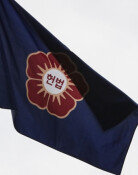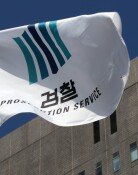Namdaemun Market showcases Korean history
Namdaemun Market showcases Korean history
Posted March. 06, 2014 06:36,
The marketplace in front of Sungnyemun (gate) opens early in the morning/ voices of people at Chilpae (Namdaemun Market) are heard over the fortress/ Considering a female slave who went out with a small basket has yet to come home/ she will likely bring a number of fresh fish (excerpts from Dasan Jeong Yak-yongs poem Chunildongcheonjabsi or Junky poem of Spring Time Dongcheon).
Namdaemun Market in central Seoul is Koreas iconic traditional market. More than 10,000 stores packed in the market sell 1,700 types of products, with more than 400,000 shoppers and visitors visiting the place on average a day. The market is known to have everything except a cats horn. The Seoul Museum of History recently published Survey of Materials on Seoul Living and Culture Namdaemun Market, which spotlights unique history of the market.
Since the foundation of the Joseon Dynasty, there were a number of big and small markets near Namdaemun, whose former name is Sungnyemun, due to influence of Shijeonhaengrang (warehouse and residential units for merchants) in Jongno. Marketplace took shape in earnest after the dynasty suffered from Imjinwaeran (Japanese invasions of Korea in 1592) and Byeongjahoran (Chinese Invasion of Korea in 1636). According to the Dongbuk Yeojibigo (Geographical record of the East Country) written in the late Joseon Dynasty, there were four Hanyang Jangshi (regularly opening market in Seoul): Jongru Gasang, around Jonggak (pavilion) of the present time; Yihyeon near Jongno 4-ga; Souimunoi outside Seosomun gate; Chilpae of Namdaemun.
Chilpae originally referred to soldiers in the Eoyeongcheong unit, which guarded the king. Since sentries of the unit were located near the area, Namdaemun Market was called Chilpae-jang. Back then, the market primarily deal with salt, chinaware, rice thatch, bush clover, bamboo products and salted (fermented) fish.
The market settled down at the current location in 1897, when a marketplace called Changnaejang was created at the Seonhyecheong warehouse site as part of a project to modernize the city. It was situated somewhere between Namdaemun Market Buildings A and B of today. Yoon Nam-ryul, researcher of art and science at the museum, said, With the differentiation from a morning market, a modern daily market was created for the first time. Soon after Koreas opening to the outside world, merchants from foreign countries also flocked to the market. As of 1907, Koreans accounted for 50 percent of the vendors, Japanese 30 percent and Chinese 20 percent in Namdaemun Market, whose trade volume was 2.6 times more than that of Dongdaemun Market that ranked second.
The once flourishing market was not immune to influence of Japans colonial rule of Korea.By proclaiming Market rules in 1914, Japans Government General of Korea sought to dismantle the market while labeling it an outmoded market. Paradoxically, the market was able to survive due to pro-Japanese people. Joseon Farming Company that was run by the traitor Song Byeong-joon (1858-1925) took over the right to operate the market, blocking revocation of the markets license. In return, the company levied hefty rents on merchants, and former Japanese government officials and entrepreneurs managed the market, grabbing profits.
The market continued experiencing hardships even after Koreas liberation from Japan. The Korean War (1950-1953) and the Great Fire in 1954, which reduced ashes more than 1,000 stores in the market, dealt a huge blow. To make matters worse, however, the organized gangsters Eom Bok-man faction, a sub-organization of the Myeong-dong faction, forfeited profits from merchants. Reportedly born in 1922, Eom bok-man deprived merchants of even donations from across the nation after the Great Fire. In 1957, when the Seoul metropolitan government transferred the operation right to Namdaemun Market Merchants Association, the era of organized gangsters came to an end.
Namdaemun Market continued to thrive later, earning nicknames Yankee Market, and Dokkaebi (goblin) Market. The market gained the reputation that one can buy anything there and merchants instantly sell products and run away to dodge crackdown by inspection guards. In 1967, The Dong-A`s column suggests, A foreign media outlet introduced (Namdaemun Market) by translating it as Devils Alley. The market also earned the nickname Abai (father) Market because many migrants from North Korea settled down there.
Unfortunately, Namdaemun Market had another fire in 1968, but instantly recovered to become what it is today. In the 1980s, the market saw the emergence of alleys of clusters selling kitchenware, textile and clothing, and artifacts, transforming its structure into a market centered on specialty stores. Yoon said, Since the1990s, Namdaemun Market has suffered slump due to the Asian financial crisis and the rise of Dongdaemun Market, but it is still one of the icons symbolizing Korea that continues to maintain tradition and influence today.
Headline News
- Med professors announce intention to leave hospitals starting Thursday
- Bridge honoring Sgt. Moon Jae-sik unveiled in Pennsylvania
- Chief of Staff Chung tells presidential secretaries to stay away from politics
- US FTC bans noncompete agreements
- N. Korea launches cyberattacks on S. Korea's defense companies







